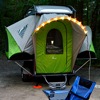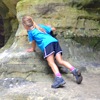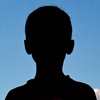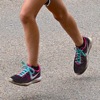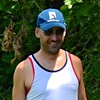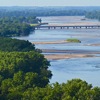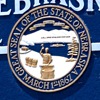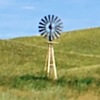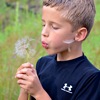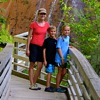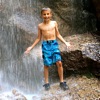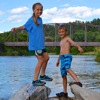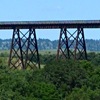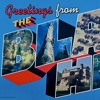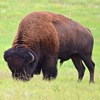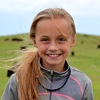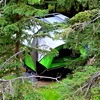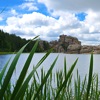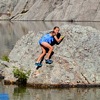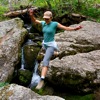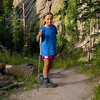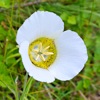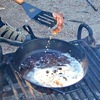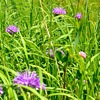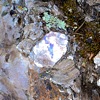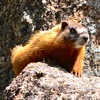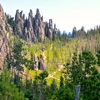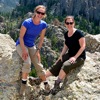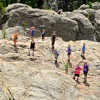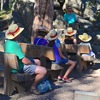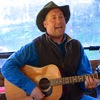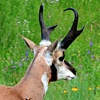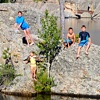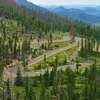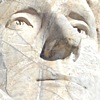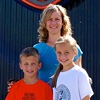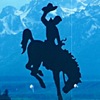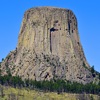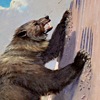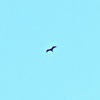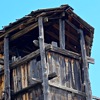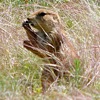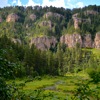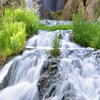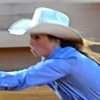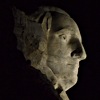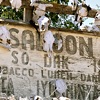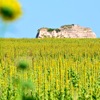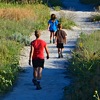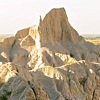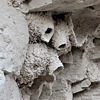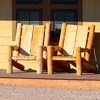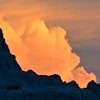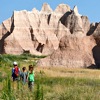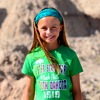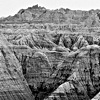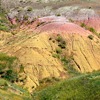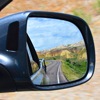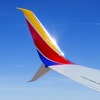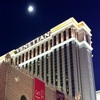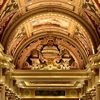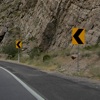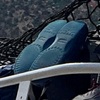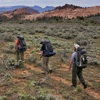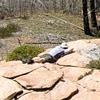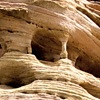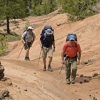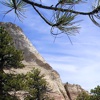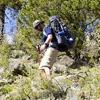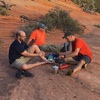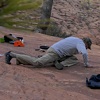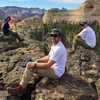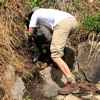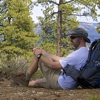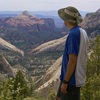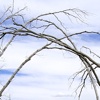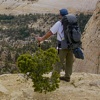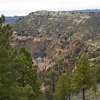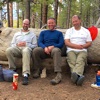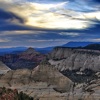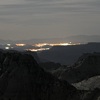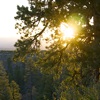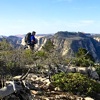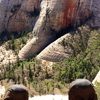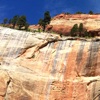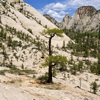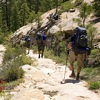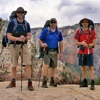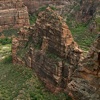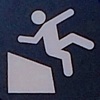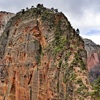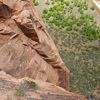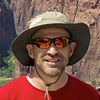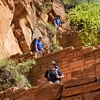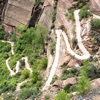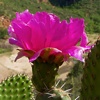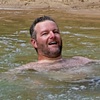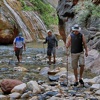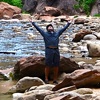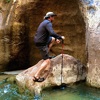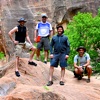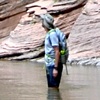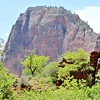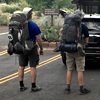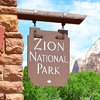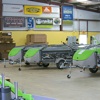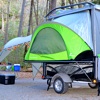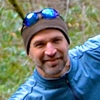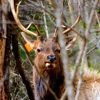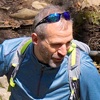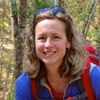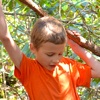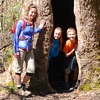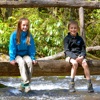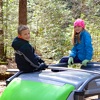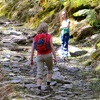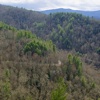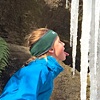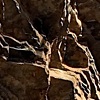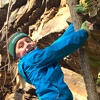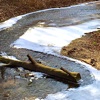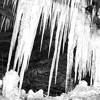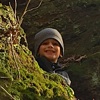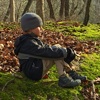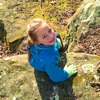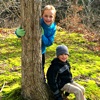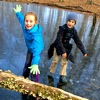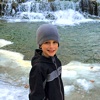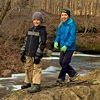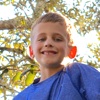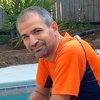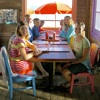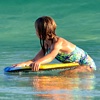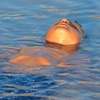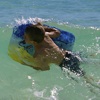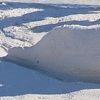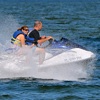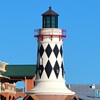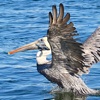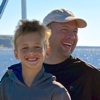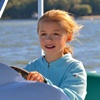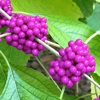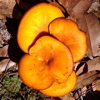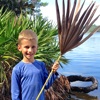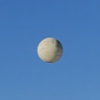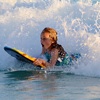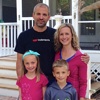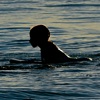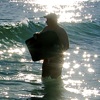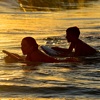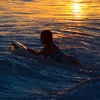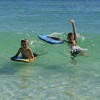Road Trip (Black Hills & Badlands)
Our great western road trip is in the rearview.
After nine months of deliberation, we bought a SylvanSport GO camper with this road trip in mind. Which meant we needed a trailer hitch, or better yet, a new car with a trailer hitch. (Sorry minivan, you were good to us!) We loaded everything we’d need for 13 days into large Rubbermaid storage tubs and set our gaze westward.
Day 1 — Starved Rock State Park, Oglesby, IL
While researching this trip, I came across an article that opined Starved Rock State Park might be worth a visit. None of us had ever been, and it was kinda-sorta in the direction we needed to go. A short 3-1/2 hours later we were setting up camp.
Starved Rock sits on the southern bank of the Illinois River, which during our visit, was quite swollen and had submerged most of the lower parking lot and riverside picnic areas. Park staff indicated it had been this way for several months. There are many canyons to explore — St. Louis Canyon is off the beaten path and we had the place to ourselves for a time. When you’re standing underneath a 80-foot waterfall, even a dreary, rainy day won’t dampen your spirits.
The campground sits outside of the main park area and does not have a store to buy firewood. We did find firewood from a nearby local who had cobbled together a makeshift camp store. More importantly, he suggested visiting Matthiessen State Park to get away from the crowds and mosquitoes. Another camper suggested kayaking the Vermillion River. Both ideas have been filed away for future trips. The kids had a great time exploring, finding a nearby raccoon den with baby cubs and more slugs than we could count.
Tip: Click to enlarge. Use the ‘Left’ and ‘Right’ arrow keys to navigate the gallery.
Days 2 & 3 — Washington, IA
All play and no work makes for a boring vacation. Hrm... maybe I have that backwards? Anyhow, Washington is home to my Mom and Premier1Supplies, a long-time client of Rare Bird. Under drizzly skies we packed up camp and headed for Iowa. As we drove, the heat and humidity ratcheted to new levels. By the time we arrived in Iowa it was a veritable sauna. Fresh from our sweat bath, we decided to try John’s Shamrock BBQ in nearby Ainsworth. I enjoy eating locally whenever possible and the Shamrock did not disappoint. Dirk loved it so much he added BBQ ribs to his favorite foods list. Unfortunately for me, this list also includes steamed crab legs. The kid is getting expensive!
I worked at Premier on Friday while the rest of the family visited Washington’s public swimming pool. The kids reported that it was “Amazing!” and “Super-fun!”, except for the mandatory swim test, which Dirk remains disgruntled about.
Days 4 & 5 — Eugene T. Mahoney State Park, Ashland, NE
Our next stop was Mahoney State Park, roughly half-way between Omaha and Lincoln. Melanie’s side of the family had scheduled their annual reunion in Nebraska, a first for the Springers.
I suppose Mahoney State Park is technically a park. It says so on the sign. It’s outside and there are a few nature trails (overgrown) that overlook the Platte River. But, traveler beware! This is not a place of solitude with an absence of human activity. Quite the opposite. It feels more like Central Park in New York City than a rustic natural setting in rural Nebraska. It was a sunny summer weekend, so perhaps the crowds were exceptionally high. Once my expectations were reset, I was able to better enjoy the park and it’s many amenities. The on-site melodrama was a hoot, and the swimming pool, while crowded, had something for everyone. This would be a good place to bring bicycles as there are paved paths between destinations. I didn’t notice the disc golf course until the end of our stay, but it looked really nice, too.
We pitched the GO in the Little Creek Campground. The sites are cramped, freight trains run through every 1/2 hour and the road noise from I-80 ceaselessly reverberates. If you must camp here, I recommend sites #26 or #27. They are larger than most of the others, more wooded and further away from neighboring sites. The bathhouse was clean with vending machines and even a laundromat. Yet another midsummer rain shower made breaking camp soggier than desired.
Day 6 — Smith Falls State Park, Valentine, NE
Now we’re getting nowhere. Finally! I was dreading the drive through Nebraska, but this turned out to be my favorite part of the trip. Imagine the Sahara Desert, then cover the sand dunes in scrubby grassland plants. Add a few hundred-thousand cattle and the occasional windmill. Finally, snake a single two-lane road through an area that is 20,000 square miles and you begin to get the picture. Shadows of Gus and Call’s epic cattle drive blurred my vision.*
At the northeastern edge of this expanse lies Smith Falls State Park and Nebraska’s tallest waterfall. Not only is this waterfall 60-feet tall, it’s fed from the Ogallala aquifer which surfaces throughout the Sandhills to create shallow lakes and cascading waterfalls along the Niobrara River. If Mahoney State Park is at one end of the back-to-nature spectrum, then Smith Falls State Park is at the opposite. It’s small and out of the way, but worth the visit. There is a single hiking trail that didn’t appear to get much use.
The campground is fairly open and geared towards tent campers. There were five sites which allowed a small camper. It was only 20% occupied on the night we were there. I get the sense that people visit the park to see the waterfall and leave, or as a stop-over on a multi-day river trip. I’d like to return one day with kayaks and paddle the Niobrara — what we saw of it was quite scenic.
Days 7, 8 and 9 — Custer State Park, Custer, SD
The Black Hills is many things to many different people. To some it provides a welcome escape into a cool pine forest ripe for exploration. To others it is a web of single lane byways that is best experienced on two wheels. Still others will come for the classic tourist destinations: Mt. Rushmore, Devils Tower, Deadwood, Sturgis and Custer State Park to name only a few.
We opted to camp for a few days in Custer State Park. This park is nestled in the heart of the Black Hills and provided us with a central base camp in a natural setting. After setting up the GO at quite possibly my favorite campsite of the trip (Sylvan Lake campground site #23), we set off to explore the Sunday Gulch Trail. After a series of blasé trails in Nebraska, this footpath set the table for the grandeur ahead.
We hadn’t even made it back to our campsite, when whom should we meet but the Sears family! Actually, this wasn’t happenstance; we had made arrangements for our paths to cross and were looking forward to spending a few days together. We hiked around Sylvan Lake, Little Devils Towers and the Cathedral Spires, but the highlight had to be the sing-a-long chuckwagon dinner with Bullhead. This is a glorified version of a hayride while singing campy songs like Home on the Range and My Brother Eats Bugs. The event culminated with a steak dinner and hoedown in the middle of the prairie.
We awoke to another cloudless blue sky and seized the opportunity to jump in Sylvan Lake before the summer crowds arrived. Then, we left to explore the surrounding area: Mt. Rushmore, Sturgis, Devils Tower in Wyoming, and Spearfish Canyon. The plan was to regroup with the Sears in Deadwood for an honest-to-goodness rodeo, complete with bull riding, calf roping and barrel racing.
Days 10 and 11 — Badlands National Park, Interior, SD
We said goodbye to the Sears and headed for Badlands National Park, the first stop on our return trip home. We had barely made it 20 minutes east of Rapid City when temperatures began to climb and the pines, so plentiful in the Black Hills, became fewer and far between. Rocky buttes began to dot the horizon until finally, an alien landscape emerged. We arrived in Scenic, a dusty town adjacent the southeastern edge of the park, home to 58 inhabitants, a saloon, and a jail. We had a few hours so we decided to explore Sheep Mountain Table. To get there required a long drive along a lonely, high-clearance road. I considered camping atop the plateau, but spending the rest of the afternoon under a scorching sun was quickly vetoed. Plus, I promised everyone that we could stay in a cabin so they could take a shower that wasn’t on a timer.
Highway 44 to Interior, SD is not especially scenic, but it is a pleasant drive none-the-less. Seemingly endless prairies in all directions give the area an infinite feel. Closer to Interior, the landscape changes dramatically. I’ve not yet been to the moon, but I do believe that Badlands National Park offers the closest thing to it on earth. We checked in, enjoyed a hot meal at the lodge, and set off to watch the sun set over the Notch Trail. We were warned that it often rained heavily on summer nights as the scorching heat gave way to violent lightning storms. Sure enough, as dusk approached, so did the billowy storm clouds.
The next morning the ominous clouds had scattered and the sun returned with renewed vigor. We decided to hike a longer trail before it become too hot; the Castle Trail could be combined with the Medicine Root Trail to make a 6-mile loop. I suggest you take even more water than you think you’ll use. I suspect it was the hot, dry air, because we were rationing our water about half-way through the hike and I was sure that we had taken more than enough. Exhausted, we made it back to our car around noon.
Day 12 — The long road home.
Our plan called for an unhurried trip home. We’d depart the Badlands via Highway 240 and make our way to Wall Drug for lunch. (If you’re on the fence about visiting Wall Drug, don’t go. Imagine the gift shop at Cracker Barrel, then imagine 20 of those together in one place but all still separate rooms. I couldn’t wait to leave.) Our next stop was The World’s Only Corn Palace in Mitchell, SD. This, as it turns out, is worth a short visit. As night fell, we’d end up somewhere around Sioux Falls where we would have our pick of interstate hotel chains.
It was at this moment, 8pm while sitting in a Holiday Inn Express parking lot, that I realized even the best-laid plans go awry. Turns out the 75th running of the Sturgis motorcycle rally was to begin in two days. The expectation was that 1-million riders from all corners of the nation would make their way to South Dakota. And they needed somewhere to stay. And that somewhere was every hotel within a 500 mile radius. We started frantically calling for a room all with the same result, “Sorry. We’re booked.” We finally found one room in Rochester, 250-miles away. Our unhurried trip home suddenly became very hurried. We made it to Minnesota in the wee hours of the morning and grinded back to Indiana the following (same) day. Pippen sure was glad to see us!
* Consider reading Lonesome Dove written by Larry McMurtry. This Pulitzer Prize-winning epic western novel won't disappoint.


